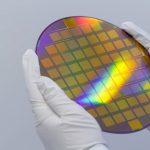One of the biggest mysteries in former Theranos founder and CEO Elizabeth Holmes’ high-profile fraud trial was whether or not she would testify. So it was a shock late Friday afternoon when the Stanford dropout took the stand, 11 weeks after the trial began. Now that the prosecution has rested its case — questioning witnesses like former U.S. Secretary of Defense James Mattis, whistleblower Erika Cheung, Theranos patients, investors, medical professionals and journalists — Holmes is telling her side of the story under oath, her defense aiming to build the case that she did not knowingly defraud her investors.
The former Silicon Valley hotshot faces two counts of conspiracy to commit wire fraud and nine counts of wire fraud. If convicted, each count could land her up to 20 years in prison.
So far, Holmes has stuck to her argument that while Theranos made errors, the startup’s failure wasn’t fraud. She claims that when she told stakeholders about the capabilities of Theranos’ technology, she was conveying what she thought was the truth. Since Holmes isn’t a trained scientist, she says she listened to the guidance of the experts she hired — she even testified that scientists and engineers designed a slide deck presented to investors.
Holmes’ defense has produced emails from high-ranking lab officials like chief scientist Ian Gibbons, who said that Theranos machines had “demonstrated capabilities fully equivalent to lab methods in areas where we have done assay development.” Holmes testified that Gibbons’ emails indicated that Theranos’ 4.0 Edison machine “could run any test,” per live courtroom reporting from Law 360’s Dorothy Atkins (the trial is not livestreamed). Gibbons died by suicide in 2013 while employed at Theranos, days before he was to be summoned to appear in court about a Theranos-related patent dispute.
Holmes has also denied that she was trying to lead Walgreens astray by sending the company documents with the unauthorized use of Pfizer’s logo. She said in court that she wishes she had handled the situation differently, but that she had included the Pfizer logo because Theranos had done some testing with Pfizer before they decided not to work together. Her defense also pulled up a study from Johns Hopkins University from around the same time, which called the Theranos technology “novel and sound.”
This is a direct response to a key claim from the prosecution, which produced evidence that Holmes sent Walgreens a document in 2010 called “Pfizer Theranos System Validation Final Report.” As it turned out, this document was created by Theranos staff, not Pfizer. Yet Pfizer’s logo appeared prominently in the document, which indicated that the pharmaceutical giant endorsed Theranos’ technology. Theranos entered into deals with Walgreens and Safeway that year. But in court, a Pfizer scientist denied that Pfizer endorsed Theranos, adding that no employees approved the document she sent while in talks about the deal. Pfizer had looked into Theranos’ technology in 2008, but chose not to invest in the company.
Holmes has also begun discussing her relationship with the Theranos board, who were paid $150,000 per year and given half a million shares for their role — former Secretary of State Henry Kissinger was paid $500,000 per year as a consultant. So far, it seems Holmes is trying to characterize the board as being knowledgeable enough about the nature of the company to make an informed investment in the company. Multiple courtroom reporters have noted that Holmes is deploying corporate and scientific jargon in her testimony.

Image Credits: Ethan Swope (opens in a new window) / Getty Images
Elizabeth Holmes built Theranos with a heartfelt pitch that raised enough capital from high-profile investors to reach a $10 billion valuation. With just a needle prick of blood, her technology would run dozens of blood tests to detect disease quicker, and at a lower cost. She famously repeated the line: “I hope that less people will have to say goodbye too soon to people that they love.”
But, as we now know — and as you can now learn about through tell-all HBO documentaries and investigative nonfiction books — the technology didn’t work, and the company appeared to continue testing patients’ blood despite knowing they couldn’t deliver accurate medical information. Her criminal trial began in early September in San Jose, California — after delays due to the pandemic and Holmes’ childbirth — with Judge Edward Davila at the bench.
In her heyday, when Forbes named her the youngest and wealthiest female self-made billionaire in America, she was portrayed as a Steve Jobs-like genius with unstoppable charisma. But in court filings, Holmes’ defense said that Ramesh “Sunny” Balwani, her former boyfriend and COO of Theranos, was abusive and controlling. The filings indicate that Holmes’ lawyers might introduce testimony on Holmes’ mental health and the effects of the abuse as part of her defense, perhaps pinning the blame of Theranos’ failure on Balwani, who will be tried for fraud separately next year.
But as Holmes has testified the last few days, the San Jose courthouse has looked more like a circus than the site of a criminal fraud case. Law360 reporter Dorothy Atkins tweeted this morning that when she arrived at 4:30 AM, she was the 32nd person in line to enter the courthouse. Due to the popularity of the case, audience members have been urged to only take notes or live-report using silent keyboards, like touch screens on a smartphone. Some journalists have brought tarot cards to give readings while waiting hours in line. The fanfare is reminiscent of the early days of the trial in September, when fans (yes, fans) of the disgraced entrepreneur cosplayed as Elizabeth Holmes. As a play on that viral moment, artist Danielle Baskin — who often pokes fun at Silicon Valley culture — sold blonde wigs, black turtlenecks, lipstick and blood energy drinks in line this morning (she later tweeted that she learned today that you can’t “sell merch” on federal property.)
Though Elizabeth Holmes makes for an easy Halloween costume, the antics around the high-profile case can’t undermine the horrifying evidence presented by the prosecution, which is working to prove to the jury that Holmes knowingly defrauded investors by lying about the efficacy of Theranos products.
One former Theranos patient, Erin Tompkins, testified in court that her Theranos test results detected the presence of HIV antibodies, which could mean she had the virus that causes AIDS, a life-threatening disease. Tompkins said she didn’t have insurance at the time, so it wasn’t until three months later that she could get a blood test elsewhere, which did not detect HIV. She said she was initially drawn to Theranos since the prices were so low. Another patient, Dr. Mehrl Ellsworth, testified that he received inaccurate results, which falsely indicated that he had prostate cancer.
Dr. Adam Rosendorff, the former Theranos lab director, testified that “the company was more about PR and fundraising than patient care,” adding that Holmes went ahead with Theranos’ commercial launch despite his concerns about the technology. One of the Theranos whistleblowers, Erika Cheung, recounted her story of quitting the startup because she was uncomfortable processing patient samples when she didn’t think the technology could provide accurate results.
After court adjourns today, the trial will take a break for the Thanksgiving holiday, resuming Holmes’ testimony on Monday. According to court schedules, her defense is expected to continue presenting its case through the middle of December.
Powered by WPeMatico






